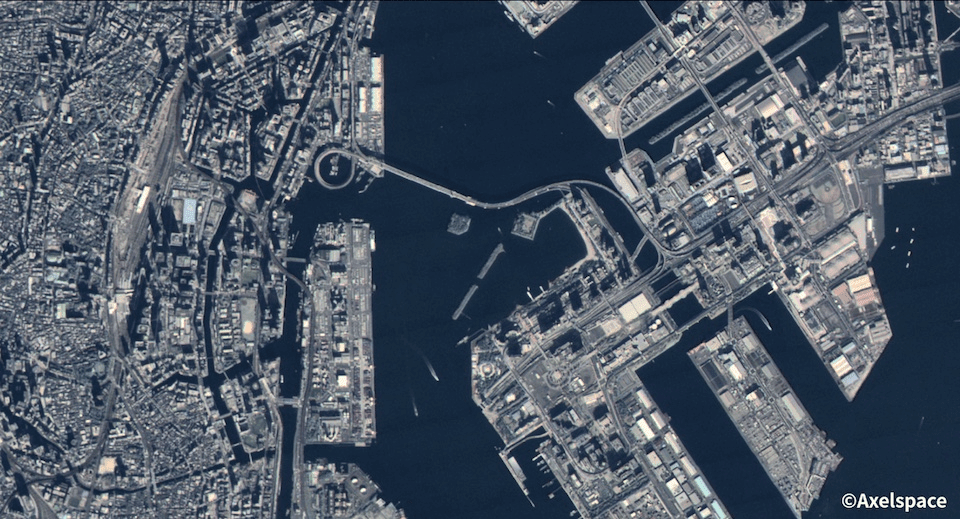
GRUS_L3A
- Optical data
GRUS, developed by Axelspace, is a next-generation remote-sensing microsatellites’ constellation. Despite weighing approximately 100 kg, the satellite can capture images with a ground resolution of 2.5 m.
-
Check the data on browser
Need to login -
Operate via API
| Satellite | GRUS-1A |
|---|---|
| Sensor | - |
| Provider | Axelspace Corporation |
| Satellite operational period | December 2018 ~ |
| Sensor overview *1 | - Ground resolution (at Nadir) Panchromatic: 2.5 m or less Multispectral: 5.0 m or less - Swath: 55 km or more - Maximum continuous observing distance: 1,000 km * For more details, search on Tellus Satellite Data Traveler and see the scene details for each piece of data. |
| Wavelength of sensor *2 | Band 0: 450-900 nm (Panchromatic) Band 1: 450-505 nm (Blue) Band 2: 515-585 nm (Green) Band 3: 620-685 nm (Red) Band 4: 705-745 nm (Red Edge) Band 5: 770-900 nm (Near-infrared) * For more details, search on Tellus Satellite Data Traveler and see the scene details for each piece of data. |
| Reference | https://docs.axelglobe.com/en/image-specifications |
| Public availability status on Tellus (Period) | 2020-2021 |
|---|---|
| Public availability status on Tellus (Region) | Japan |
| Need to purchase | Can be used without purchase |
| Environment in which data can be accessed *3 | This can only be used in the Tellus environment |
| Data formatting | GeoTIFF Unusable Data Mask (UDM) file |
| COG data availability | Yes |
| Notes | This image product consists of AxelGlobe Cells, 5 km x 5 km per tile. This product is intended for applications that require accurate location information and map projection images. The image product is processed with sensor correction, geometric correction, and map projection. In addition to extracting the Ground Control Points (GCP) from the reference base map using proprietary technology, geographic correction is applied by combining conventional methods for areas where automatic GCP extraction is difficult. The location accuracy of the image product depends on the GCP used and may vary from region to region. |
| Examples/reference | |
| Terms of use | https://www.tellusxdp.com/traveler/dataset/ccac77c8-720a-45cd-a6b9-2698bc2a5ee2/ |
Need to login
View more information
Data set details - Tellus TravelerNotes when using
- - You can use your derivative works generated in Tellus as you need. Refer here for more information.
- - Some data prohibits copying the original data to use outside of Tellus including just a part of, or formatted data that can be restored back to the original.
- - When using data in your own environment outside of Tellus, please notice that some of the data prohibit the usage or downloading. Please make sure to read the data details page.
- - You need an agreement in advance for commercial use. Please inquire Tellus office.
Reference for terms
- *1 Sensor overview
- The basics of satellite data — What it tells us, types, observation interval, resolution and use cases
- *2 Wavelength of sensor
- What is wavelength? Why satellites have capabilities to detect objects invisible to the human eye - Sorabatake
- *3 Environment in which data can be accessed
- Available only in Tellus: You can use data only in Tellus for either development or analysis environment.
Available from outside Tellus: You can use data in your own environment through downloading and/or API.